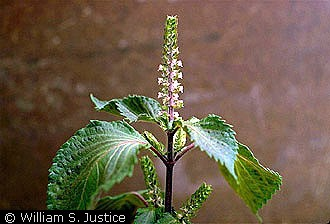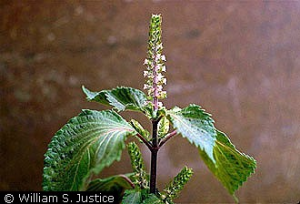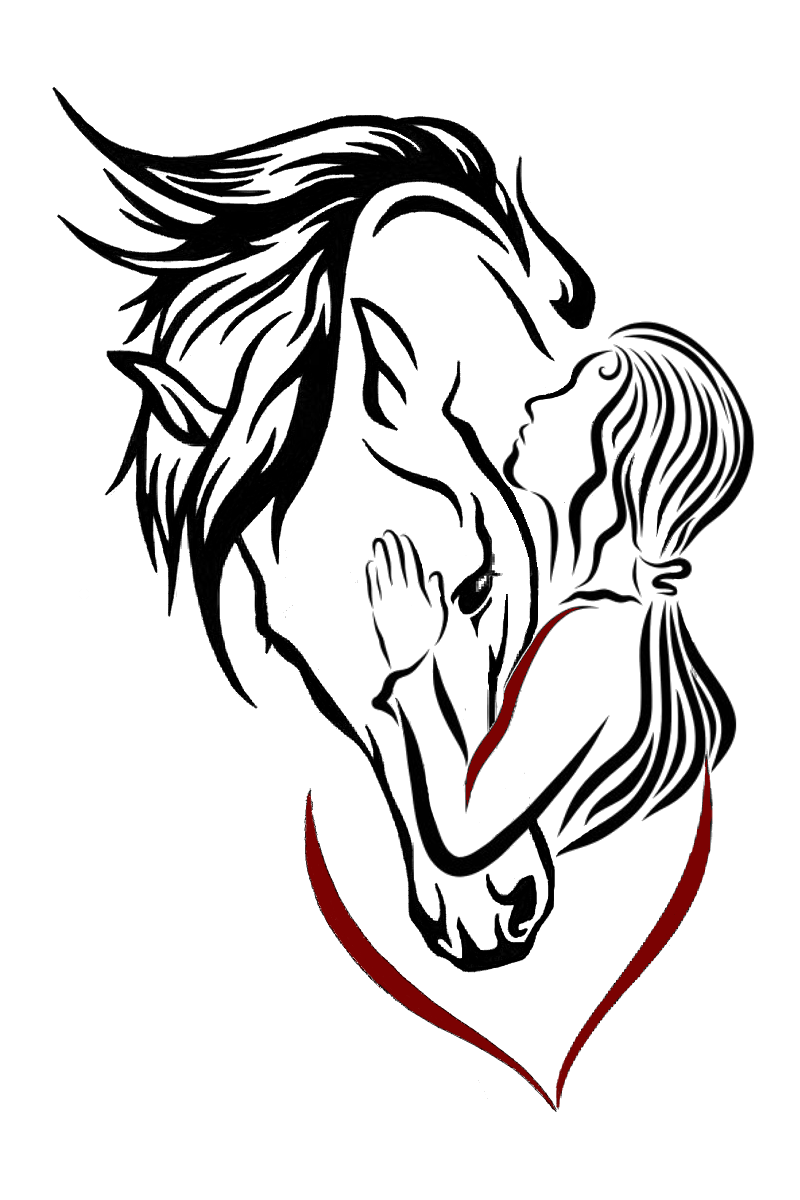The Bad Boy of the Mint Family

Watch out, especially in late summer, early fall!!
Many of us who strive to provide as natural a lifestyle as possible for our horses, include herbs into the environment. The most universally included herb in a natural horse husbandry is mint. Known for its soothing effect for gastrointestinal complaints, it is an excellent indicator that a horse may have a tummy ache if he is seeking mint. It is easy to grow anyplace where water is near. Various members of the mint family (Lamiaceae) grow all over the world and all members of the mint family are considered safe.
Having worked with herbs most of my life, mint has always been a part of my herbal apothecary. I have used several varieties and knew the various species well…or so I thought. When an unfamiliar variety of mint showed up in my pasture, I set about to identify it. I knew it was a member of the Lamiaceae family by the characteristics common to all mints – square stalk, “minty” scent. But it was different from other mints I have known…the scent was more like anise and the mature leaves were curly and often purple, especially the underside. It took months of searching through databases to identify it. At long last, I found it… Perilla frutescens:
Perilla Herb General info:
 Perilla is a member of the mint family, Lamiaceae. The most common species is Perilla frutescens var. japonica or shiso, which is mainly grown in India and East Asia. It is an herb considered rich in minerals and vitamins and has anti-inflammatory properties. It is also a very rich source of the omega-3 fatty acid, alpha-linolenic acid. Traditionally, it is used in the treatment of asthma, colds, cough and lung afflictions, influenza prevention, nausea, vomiting, abdominal pain, constipation, food poisoning and allergic reactions.
Perilla is a member of the mint family, Lamiaceae. The most common species is Perilla frutescens var. japonica or shiso, which is mainly grown in India and East Asia. It is an herb considered rich in minerals and vitamins and has anti-inflammatory properties. It is also a very rich source of the omega-3 fatty acid, alpha-linolenic acid. Traditionally, it is used in the treatment of asthma, colds, cough and lung afflictions, influenza prevention, nausea, vomiting, abdominal pain, constipation, food poisoning and allergic reactions.
Well, yay! This stuff was growing in huge clumps near the creek that borders the pasture. So I figured I’d let it grow and harvest it for its nutritional and medicinal value. We, natural horse folk, let beneficial “weeds” grow in our pastures and this was a powerhouse of a mint…had to be good!
Not so fast!!
A little more digging and I found the rest of the story.
Perilla mint is very poisonous to cattle and other ruminants, as well as horses. All plant parts are toxic, especially the flowering structures. Dried plants in hay can be toxic, but the greatest risk is associated with consumption of fresh plant material, especially if flowers and fruit are present.
Cases of poisoning from these weeds are a concern during the late summer and early falls when other grasses and forages might be in short supply and the perilla mint is flowering. Cattle, horses, and sheep are the most commonly affected animals. Affected animals will exhibit signs of respiratory distress. Clinical signs include labored breathing, a grunting sound when exhaling, and possible nasal discharge and elevated
temperature. Once these symptoms begin to appear, treatment is usually ineffective. Injections of antihistamines, steroids, and antibiotics may be given. Affected animals should be handled gently to prevent further respiratory complications
To say that my heart fell to my feet is an understatement. You see, for several years some of my horses were having various degrees of heaves, some severe, some mild. Certain times of the year seemed worse than others, but that varied by individual. In all of them we never could figure out the cause. None of the usual culprits associated with heaves were present. My horses live out 24 /7 and have the entire time I’ve had them. Everything commonly thought to cause heaves was explored…allergies, infection, even lung worms were ruled out. Since they were never stalled, barn dust wasn’t a problem. The vet finally shrugged and said, it’s probably just dust from the ground. Seriously??! Not only are we in an area that has the second highest annual rainfall of the entire US (not a heck of a lot of dust here!), but if that were the case, every wild or domestic horse that lived in the desert would have heaves. When I found out about perilla…I knew in an instant I had found the culprit…it all made sense. But that realization was quickly followed by a sense of devastation.
Treatment and prevention: No specific antidote. Once clinical signs are seen course of disease is difficult to reverse. Supportive care may include administration of steroids, antihistamines and antibiotics. Prevention involves eliminating plant in areas where animals graze.
The damage is done.
This stuff is dangerous. I had never heard of it. I checked the toxic plant list at Cornell University, long considered the best source for advice on plants dangerous to horses. It isn’t even listed. I asked around to hay farmers, vets, ranchers and no one here had ever heard of this stuff, even though Tennessee farmers know it well and I am in Georgia! I can assure you folks around here know about it now! One vet stood there like a deer in the headlights after he read the material I gave him. He had several horses with unexplained heaves in his client base and even had it growing in his own pasture with his horses.
It took me a solid week, working every day to pull it up by the roots. I did not want to mow it (it would just grow back, plus it’s still dangerous even dried and “dead”). I did not want to Chernobyl the land (or the horses) by spraying it with herbicides. Thankfully, it has shallow roots and pulls up easily. It kept popping up, so I rented a Bobcat and scraped off all the topsoil. Now I hunt for it every few days.
While perilla is most prolific in the Southeastern US, don’t assume other areas don’t have it. It is a mint and it can grow anywhere any other mint grows. It is prized in Japanese cuisine – known by its Japanese name of shiso, and people seek it out to grow at home, so it could be growing anywhere, even in your neighbor’s garden, planted on purpose.
Here is a link to its distribution in the U.S. http://www.invasiveplantatlas.org/subject.html?sub=3413
If it isn’t listed in your area, don’t assume its not there. Keep an eye out.
Source(s)
http://utextension.tennessee.edu/vanburen/Documents/Perilla%20Mint.pdf
https://utextension.tennessee.edu/publications/Documents/W135.pdf
http://www.invasiveplantatlas.org/subject.html?sub=3413
Cindy “Hawk” Sullivan
© Copyright 2013, Equine Sciences Academy, All Rights Reserved
